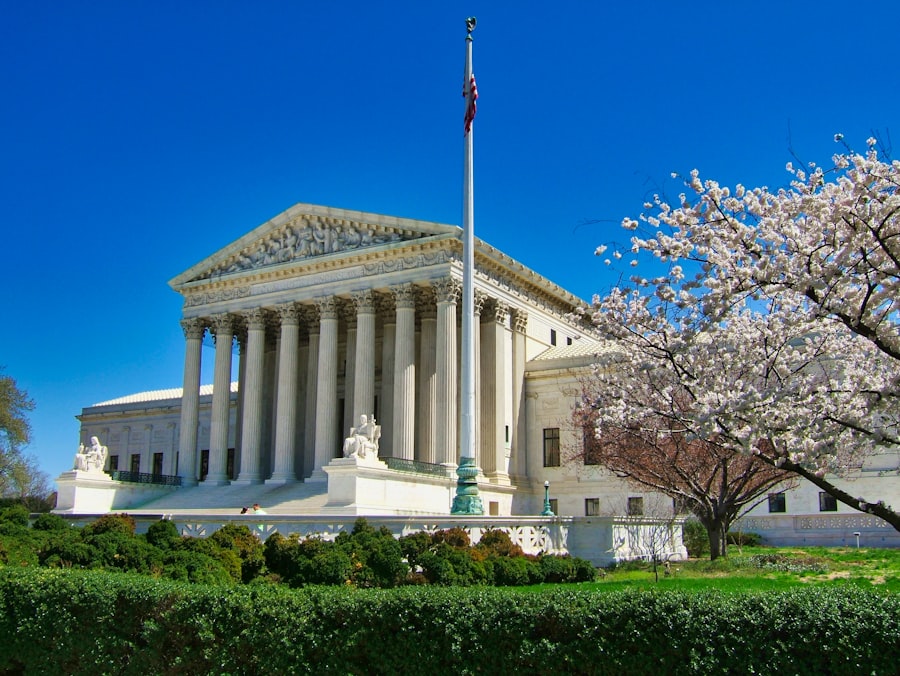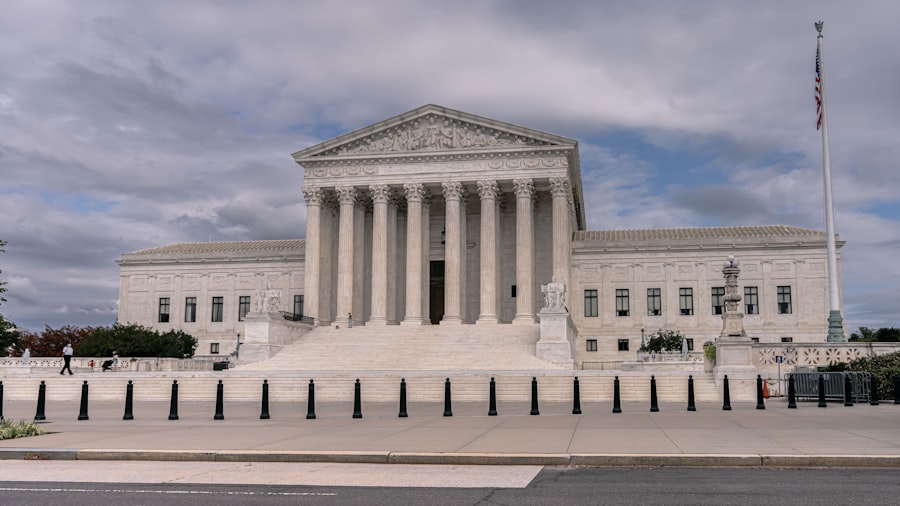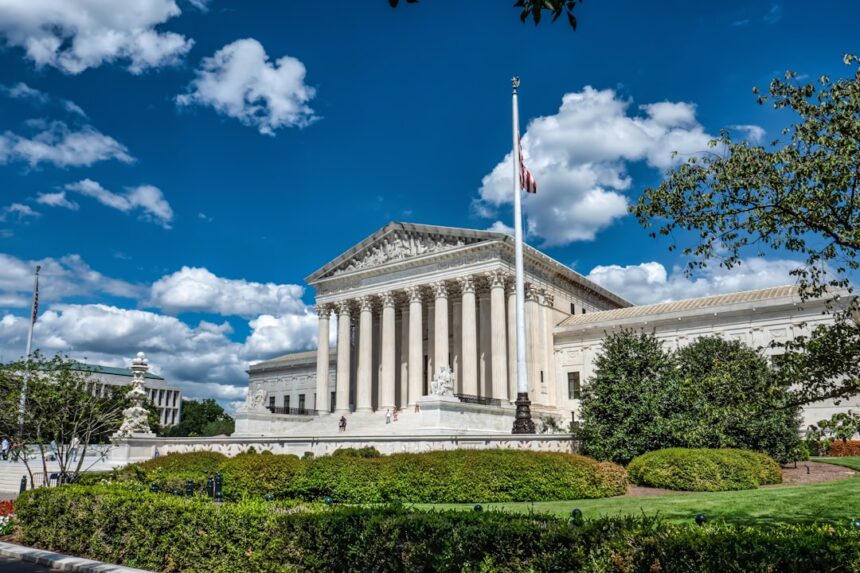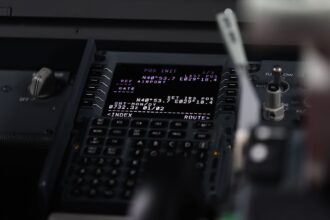The Supreme Court of the United States occupies a pivotal position in the American legal system, particularly during times of war. Its role extends beyond mere interpretation of the law; it serves as a guardian of the Constitution, ensuring that the rights of individuals are upheld even in the face of national crises. The Court’s decisions during wartime can have profound implications, not only for the immediate context but also for the long-term trajectory of civil liberties and governmental authority.
As the nation grapples with the complexities of war, the Supreme Court often finds itself at the intersection of national security and individual rights, tasked with navigating the delicate balance between these sometimes conflicting interests. In times of conflict, the actions of the executive branch often expand, driven by the urgency of national security. This expansion can lead to tensions with the judicial branch, which is charged with upholding constitutional protections.
The Supreme Court’s involvement in wartime issues is crucial, as it provides a check on executive power and ensures that the rule of law prevails. The Court’s decisions can either reinforce or challenge the government’s actions, shaping public policy and influencing societal norms. Understanding this dynamic is essential for comprehending how the Supreme Court functions during periods of war and how its rulings resonate through history.
Key Takeaways
- The Supreme Court plays a crucial role in shaping wartime policies and resolving disputes between branches of government.
- Historical precedents show that the Supreme Court has been involved in controversial cases and decisions during major conflicts.
- The balance of power between the executive and judicial branches is a key factor in the Supreme Court’s role in protecting individual rights during wartime.
- National security often impacts civil liberties, and the Supreme Court has the authority to check government actions through judicial review.
- Public opinion can influence Supreme Court decisions during wartime, highlighting the intersection of international and domestic law.
Historical Precedents: Supreme Court Cases During Wartime
Throughout American history, several landmark Supreme Court cases have emerged during wartime, illustrating the Court’s complex relationship with issues of national security and civil liberties. One notable example is Korematsu United States (1944), which upheld the internment of Japanese Americans during World War
Another significant case is Ex parte Milligan (1866), which addressed the use of military tribunals during the Civil War. The Supreme Court ruled that civilians could not be tried in military courts when civil courts were open, emphasizing the importance of maintaining constitutional protections even in times of war. This decision underscored the principle that individual rights should not be sacrificed on the altar of national security, setting a precedent for future cases involving civil liberties during wartime.
These historical precedents highlight the ongoing struggle between safeguarding individual rights and addressing national security concerns.
The balance of power between the executive and judicial branches is particularly pronounced during wartime. The executive branch often asserts broad authority to act swiftly in response to perceived threats, while the judicial branch serves as a counterbalance, ensuring that such actions remain within constitutional limits. This dynamic can lead to significant legal battles, as courts are called upon to adjudicate disputes over executive actions that may infringe upon civil liberties.
In many instances, the Supreme Court has had to navigate this tension by interpreting the Constitution in light of contemporary circumstances.
The ruling established the “clear and present danger” test, allowing for restrictions on speech that posed a significant threat to national security.
This case exemplifies how the Court has historically balanced individual rights against governmental interests, often reflecting the prevailing attitudes and fears of society at large.
The Impact of National Security on Civil Liberties

National security concerns frequently lead to policies that can infringe upon civil liberties, raising critical questions about the extent to which individual rights can be curtailed in times of crisis. The Supreme Court has grappled with these issues throughout its history, often finding itself at a crossroads between protecting citizens’ rights and addressing legitimate security threats. The impact of national security on civil liberties is not merely theoretical; it manifests in real-world consequences for individuals and communities.
For instance, post-9/11 policies such as the USA PATRIOT Act expanded government surveillance capabilities and raised alarms about privacy rights. The Supreme Court has been called upon to evaluate these measures, weighing their necessity against potential violations of constitutional protections. The ongoing debate surrounding national security and civil liberties underscores a fundamental tension within American democracy: how to safeguard freedom while ensuring safety in an increasingly complex world.
Judicial Review: The Supreme Court’s Authority to Check Government Actions
| Topic | Data/Metrics |
|---|---|
| Number of Cases Reviewed | Over 10,000 cases reviewed since 1789 |
| Types of Cases Reviewed | Constitutional, Statutory, and Administrative Law cases |
| Decision Types | Majority opinion, Concurring opinion, Dissenting opinion |
| Impact of Decisions | Shaping public policy, influencing future laws and regulations |
| Checks and Balances | Ensuring government actions comply with the Constitution |
Judicial review is a cornerstone of the Supreme Court’s authority, allowing it to assess the constitutionality of government actions. This power is particularly significant during wartime when executive actions may encroach upon individual rights or exceed constitutional boundaries. The ability to review and potentially overturn government decisions serves as a vital check on power, reinforcing the principle that no branch of government is above the law.
The Supreme Court’s exercise of judicial review has led to landmark decisions that have shaped American jurisprudence. For example, in cases like Hamdi Rumsfeld (2004), the Court affirmed that even in wartime, individuals detained by the government have a right to due process. This ruling highlighted the importance of judicial oversight in protecting individual rights against potential government overreach, reinforcing the notion that constitutional protections remain intact regardless of external circumstances.
The Role of the Supreme Court in Resolving Disputes Between Branches of Government
The Supreme Court plays a crucial role in resolving disputes between branches of government, particularly during wartime when tensions may escalate over issues of authority and jurisdiction. As conflicts arise between executive actions and legislative intent, the Court serves as an arbiter, interpreting laws and determining their constitutionality. This function is essential for maintaining a balance of power among branches and ensuring that no single branch dominates.
One notable instance occurred during the Vietnam War when Congress sought to limit presidential powers through legislation such as the War Powers Resolution. The Supreme Court’s involvement in cases related to this legislation underscored its role in mediating disputes over war powers and executive authority. By adjudicating these conflicts, the Court not only clarifies legal ambiguities but also reinforces democratic principles by holding each branch accountable to constitutional standards.
The Intersection of International Law and Domestic Law in Wartime

The intersection of international law and domestic law becomes particularly pronounced during wartime, as nations grapple with their obligations under international treaties while navigating domestic legal frameworks. The Supreme Court often finds itself at this crossroads, tasked with interpreting how international law influences domestic legal principles and vice versa. This intersection raises complex questions about sovereignty, human rights, and accountability.
For example, cases involving detainees at Guantanamo Bay have highlighted tensions between international humanitarian law and U.S. domestic law. The Supreme Court’s rulings in these cases have underscored its role in ensuring that international obligations are respected within domestic legal contexts.
By addressing these issues, the Court not only shapes U.S. policy but also contributes to broader discussions about global justice and human rights standards.
The Supreme Court’s Role in Protecting Individual Rights During Wartime
The protection of individual rights during wartime is a fundamental responsibility of the Supreme Court, which must navigate complex legal landscapes while upholding constitutional guarantees. Throughout history, the Court has faced challenges related to free speech, due process, and equal protection under the law—issues that often come to the forefront during periods of conflict. In cases such as Brandenburg Ohio (1969), the Supreme Court reinforced protections for free speech even in times of unrest, establishing that inflammatory speech could only be restricted if it incited imminent lawless action.
This ruling exemplifies how the Court has sought to protect individual rights against governmental encroachments while recognizing the unique challenges posed by wartime conditions. By prioritizing civil liberties, the Supreme Court plays a crucial role in preserving democratic values even amidst national crises.
The Influence of Public Opinion on Supreme Court Decisions in Wartime
Public opinion can significantly influence Supreme Court decisions during wartime, as societal attitudes toward conflict and security shape judicial reasoning and outcomes. Justices are not immune to prevailing sentiments; they often consider how their rulings will resonate with public perceptions and expectations regarding national security and civil liberties. For instance, during World War II, public sentiment largely supported government actions such as Japanese internment, which influenced the Court’s decision in Korematsu United States.
Conversely, as public opinion shifted over time—particularly regarding issues like civil rights—the Court has sometimes reversed earlier decisions or taken bolder stances to align with evolving societal values. This interplay between public opinion and judicial decision-making underscores the dynamic nature of law and its responsiveness to changing societal contexts.
Controversial Cases: The Supreme Court’s Decisions During Major Conflicts
Controversial cases often emerge from Supreme Court decisions made during major conflicts, reflecting deep societal divisions and raising questions about justice and fairness. These cases can become flashpoints for broader debates about civil liberties and governmental authority, illustrating how legal rulings can reverberate through society long after conflicts have ended. One such case is Boumediene Bush (2008), which addressed the rights of Guantanamo Bay detainees to challenge their detention in U.S.
courts.
This decision sparked intense debate about executive power and individual liberties during wartime, highlighting how controversial rulings can shape public discourse and influence future legal interpretations.
The Legacy of Supreme Court Decisions in Shaping Wartime Policies
The legacy of Supreme Court decisions during wartime extends far beyond their immediate context; they shape policies and legal frameworks for generations to come. Landmark rulings establish precedents that guide future judicial interpretations and inform legislative actions, influencing how society navigates complex issues related to war and peace. As history demonstrates, decisions like those made in Korematsu United States or Hamdi Rumsfeld continue to resonate today, serving as touchstones for discussions about civil liberties in times of crisis.
The Supreme Court’s role in shaping wartime policies underscores its significance as a protector of constitutional values while also reflecting broader societal attitudes toward security and freedom. Ultimately, these decisions contribute to an ongoing dialogue about how best to balance individual rights with collective safety—a conversation that remains relevant in contemporary discussions about national security and civil liberties.
In a recent exploration of the Supreme Court’s role during wartime, an article on In The War Room delves into the intricate balance between national security and civil liberties. The piece examines historical cases where the Supreme Court has had to navigate the complex legal landscape during periods of conflict, highlighting key decisions that have shaped the nation’s legal framework. For a deeper understanding of how the highest court in the land has influenced wartime policies, you can read the full article by visiting In The War Room.
WATCH THIS! 😱The Nazi Trial America Never Wanted You To See 😱
FAQs
What is the role of the Supreme Court during wartime?
The role of the Supreme Court during wartime is to interpret the Constitution and laws of the United States, and to ensure that the government’s actions comply with these legal standards, even in times of national crisis.
Has the Supreme Court made significant rulings related to wartime?
Yes, the Supreme Court has made several significant rulings related to wartime, including decisions on issues such as the rights of detainees, freedom of speech during wartime, and the scope of presidential powers in times of war.
What are some examples of Supreme Court cases related to wartime?
Some examples of Supreme Court cases related to wartime include Ex parte Milligan (1866), which addressed the rights of civilians during the Civil War, and Korematsu v. United States (1944), which dealt with the internment of Japanese Americans during World War II.
How does the Supreme Court balance national security and individual rights during wartime?
The Supreme Court seeks to balance national security and individual rights during wartime by carefully considering the specific circumstances of each case and weighing the government’s interest in protecting the nation with the constitutional rights of individuals.
Can the Supreme Court’s rulings during wartime have long-term implications?
Yes, the Supreme Court’s rulings during wartime can have long-term implications, as they can shape the legal framework for future conflicts and establish precedents that guide the balance between national security and individual rights.




